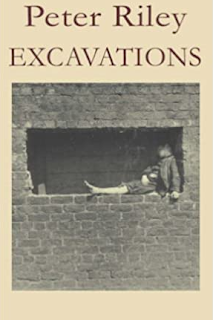I mean, obviously, the project is too big. It's incomplete, and incompletable. It's anachronistic, a one-man band in an era of collaborative symphonic orchestrations, big linked data.
I can't compete with Arachne, for instance (or the whole ensemble of iDAI)--how could I? I can't compete with the Beazley Archive for pottery. I can't compete with Digital LIMC for illustrating Classical mythology. I can't compete with the Catalogo generale dei Beni Culturali (see, in particular, the currently 376172 results in Beni archeologici!) for the sites and artifacts of Italy. I'm sure I'm forgetting other projects of this ilk; it's late. (Edited to add: Wikimedia Commons! I can only bow in awe... and meanwhile mutter that there aren't enough cross-cutting boxes)
Why continue? Well, it's my own form of madness. I hear from many of you that you find it helpful, and I'm very glad for that. It does encourage me to keep going! But at root I would probably be doing it anyhow, to scratch my own peculiar itches, which have a lot to do with adding context to absolutely everything--sorting everything into little (and not-so-little) boxes. The great thing is that they can each go into multiple boxes! I can cross disciplinary, chronological, and geographical boundaries when and where I feel like it.
What's more, for certain classes of material, I can compete with Arachne; for example, they only have nine photos of Genucilia plates; where I've got, as of this writing, 76 such photos (and there are more on the way, Leah and Laura!). Now, the Catalogo Generale returns 108 results for Genucilia. Maddeningly, however, the majority of these include only photos of the profile of the plates (not even profile drawings, except in rare cases). My brother in Bacchus, no one is looking for side-views of Genucilia plates, at least not to the exclusion of the tondo decoration.
Further, hoo boy, the Catalogo Generale has a clunky interface. And if I want to see other artifacts with the same provenance as a given Genucilia plate, I'm going to potentially get everything from the Neolithic to the 1950s. That could be cool for some people, but it's not what I'm looking for. I can also see other artifacts from the same chronological range (here we're limited to half-century spans, which is probably realistic for a big archaeological database). You can compare "349 a.C - 300 a.C" on the CatGen with "2nd half 4th c. BCE" on my Flickr. If you want to get a sense of Late Classical-very Early Hellenistic material culture, you might want to have a look at both! Of course, my results are going to skew slightly more monumental and flashy (though I do try to get some cookpots in where possible), because I'm limited to what makes its way into museum cases, whereas the CatGen in theory has access to all the archaeological storerooms of Italy, even if this dream is far from being realized as yet). But I can show you things from outside the national boundaries of Italy, even if they were originally found there. And ideally it should be easy to see monuments, sculpture, potsherds, and miniature terracottas cheek-by-jowl for a given time and place. Another benefit, from my point of view: conceptual categories such as "Ancient dance" or "Funerary lions of antiquity"; (we can also have a little fun sometimes, as a treat).
Not to be forgotten: being able to license all the photos as Creative Commons! This is becoming more common with the big databases, but it's not universal.
There is also the possibility of being able to put together collections of photos for teaching purposes (albeit imaginary classes that it seems increasingly unlikely I will ever be able to teach).
Other considerations: I'm not dependent on external funding (well, I am, to the extent that I still need to eat, access the internet, buy more backup storage, and keep the Flickr subscription renewing ad infinitum). I am, however, dependent on Flickr continuing to exist. There have been times in the past two decades when it hasn't looked good, but by golly they've scraped by and carried on. If something were to happen, I'm confident someone would build a place to go. In a sense, Flickr is just a frame to hang all the metadata on. (But I very much hope it sticks around as long as conceivably possible! Which of course leads me to another limitation--I have to stick around as long as conceivably possible. Now, if the human world is still chugging along for the foreseeable, I absolutely need to get this m(a/e)ss of photos and metadata into some kind of an institutional framework sooner or later. But that's not for this post.)











